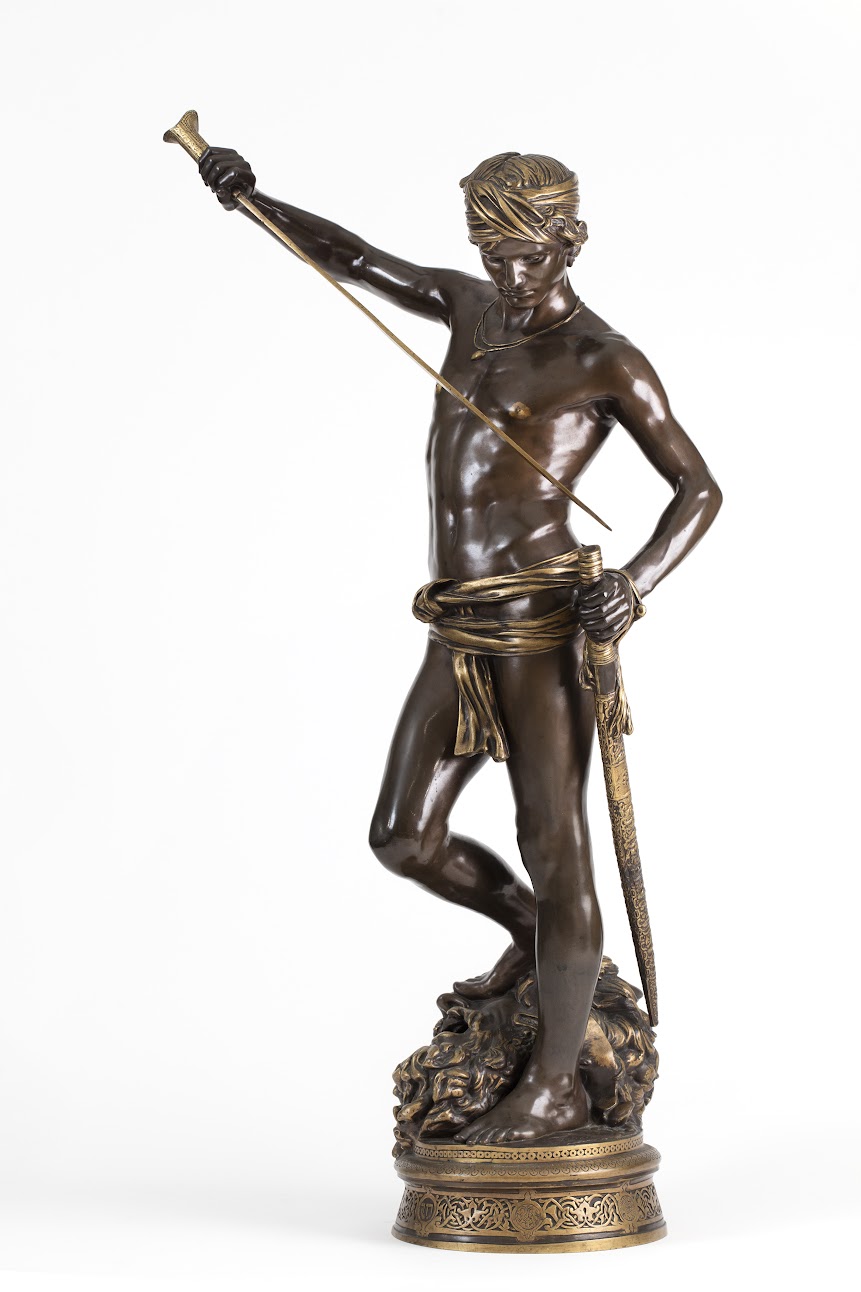Antonin Mercié was born in Toulouse in 1845. His youth was marked by an early passion for sculpture. At the École des Beaux-Arts in Paris, he trained under the guidance of masters such as Alexandre Falguière and François Jouffroy, discovering the subtleties of form and light that would bring his creations to life.
Antonin Mercié’s career took a decisive turn in 1868 when he won the prestigious Prix de Rome with his sculpture “Theseus Slaying the Minotaur.” This victory was just the prelude to a series of successes that culminated in his emblematic work, “Gloria Victis.” Created in 1872, this poignant statue, depicting a winged goddess carrying an injured soldier, became the symbol of a country wounded by its defeat to Prussia.
Additionally, his sculptures “David” and “The Genius of the Arts” stand as testaments to his creative genius. The former, a reinterpretation of the biblical hero, shows the young David triumphing over Goliath, while the latter, a bas-relief installed at the Louvre, celebrates the arts and their power of elevation.
Mercié did not limit himself to sculpture; he also explored painting and teaching, becoming a professor at the École des Beaux-Arts, where he trained generations of artists, including the famous Constantin Brancusi. His influence extends well beyond his time, and his commitment to art led him to join the Institut in 1891 and to preside over the Société des artistes français in 1913.
Antonin Mercié passed away in 1916 in Paris, leaving behind a legacy that reflects a rich and varied artistic journey. His remains now rest in the Terre-Cabade cemetery in Toulouse, a city that will never forget him, just as his work continues to inspire and move future generations.

Sign up to the newsletter and stay informed about our latest acquisitions and exhibitions:
© Galerie Rousset 2023